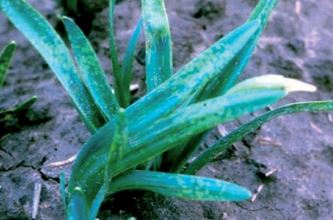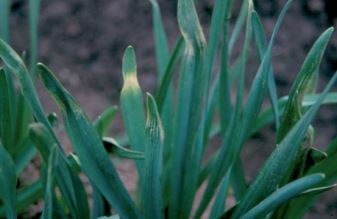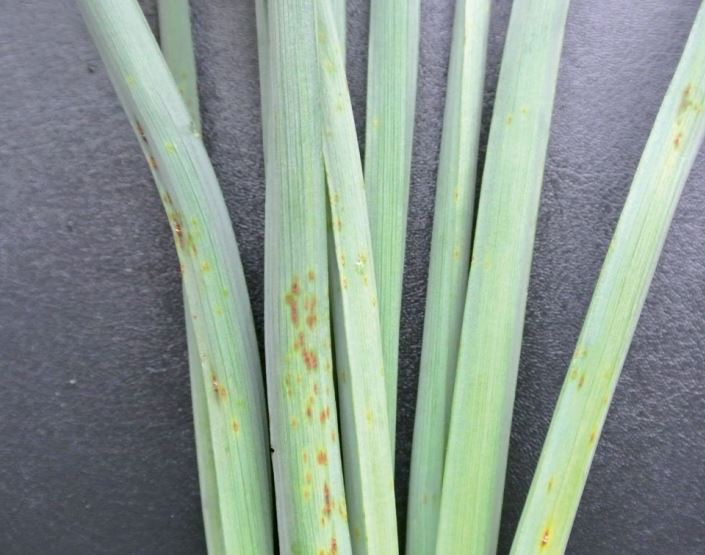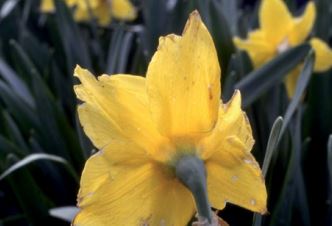Please click here to access the main AHDB website and other sectors.
- Home
- Knowledge library
- Other foliar disorders and fungal diseases of narcissus
Other foliar disorders and fungal diseases of narcissus
Leaf scorch, smoulder and white mould aren’t the only threats to your narcissus crop. Understand the other fungal diseases and foliar disorders in order to ensure a productive crop and healthy harvest.
The information was last updated in 2016.
Go back to the main page: Narcissus leaf scorch, smoulder and white mould
Hot water treatment
Hot water treatment (HWT) of bulbs outside the safe treatment period or without warm storage can damage the flowers and leaves.
Leaves damaged by HWT show speckling of tips, surface roughening and occasionally distortion (see figure 1).
 AHDB Horticulture
AHDB Horticulture
Figure 1. Severe damage occurring after hot-water treatment.
Cold damage
Exposure of young leaves in very cold weather can prevent exposed parts becoming green, resulting in a chlorotic band across the leaf later in the season (see figure 2).
Alternating periods of slow and rapid growth in winter can also result in horizontal bands across the leaf.
 AHDB Horticulture
AHDB Horticulture
Figure 2. An example of frost damage in narcissus
Daffodil 'rust'
'Rust’ occurs sporadically on daffodils, causing significant loss of flower crops in some years.
It has been regarded as a physiological disorder, and lesions (see figure 3) were recently shown to be associated with a high soil water content, but also with the presence of a Stemphylium species (Project BOF 76a).
Daffodil ‘rust’ is not due to a rust fungus and does not warrant specific fungicide applications.
 Gordon Hanks
Gordon Hanks
Figure 3. Commercial daffodil stems showing mild to moderate symptoms of physiological rust.
Fire
This disease, caused by the fungus Botryotinia (Botrytis) polyblastis is primarily found on the flowers and was common in Southwest England before the practice of picking flowers in tight bud was adopted.
Symptoms are pale brown spots on open flowers (see figure 4).
As the flowers wither, the fungus produces masses of conidia, which are dispersed onto the leaves to cause spotting. Sclerotia are produced in the leaf spots as infected leaves die down.
The life cycle recommences when sclerotia in leaf trash germinate in late winter to produce ascospores that infect narcissus flowering at that time.
Cultivars of the Tazetta group are very susceptible.
 ADAS
ADAS
Figure 4. Botrytis polyblastis causing flower spot

